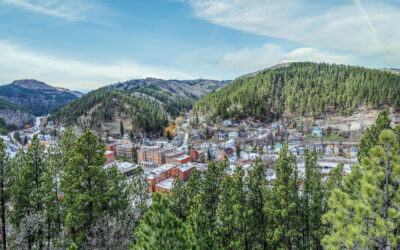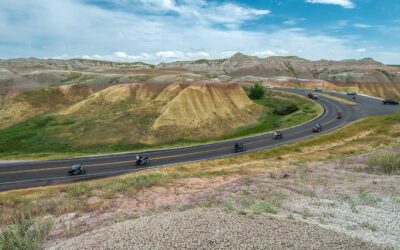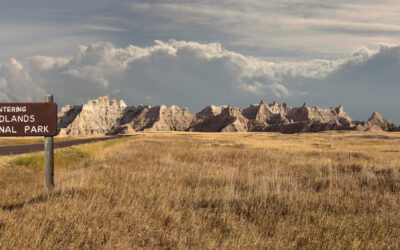South Dakota, with its serene landscapes and rich cultural tapestry, offers a unique and enriching experience for visitors. The Crazy Horse Memorial stands as a testament to Native American history and the ongoing efforts to honor the heritage of the Lakota Sioux. This visitor’s guide delves into the memorial’s legacy, the scenic beauty of South Dakota, and the vibrant Lakota culture, providing travelers with a comprehensive overview of what to expect and how to make the most of their journey.
Key Takeaways
- The Crazy Horse Memorial is a symbol of Native American pride and a monument to the Lakota Sioux warrior, Crazy Horse.
- Visitors can witness the world’s largest monument carving in progress and participate in cultural events and powwows.
- South Dakota’s scenic routes offer breathtaking landscapes and iconic landmarks like Mount Rushmore and Badlands National Park.
- The Black Hills region is an outdoor enthusiast’s paradise, with opportunities for hiking, biking, and climbing.
- Understanding and respecting Lakota culture is an integral part of the visitor experience, with traditional ceremonies, dances, and arts and crafts to explore.
Unveiling the Legacy: The Crazy Horse Memorial
The Vision Behind the Stone
The Crazy Horse Memorial stands as a testament to the enduring spirit and rich heritage of Native American culture, particularly honoring the Lakota leader Crazy Horse. The monument’s conception was rooted in a desire to create a symbol of Native American heroism and resilience. Sculptor Korczak Ziolkowski began the colossal project in 1948, driven by a vision shared with Lakota Chief Henry Standing Bear to preserve and celebrate the history of the indigenous people of the Black Hills region.
South Dakota offers a variety of attractions, including museums, parks, and regions that allow visitors to explore the state’s rich history and heritage. The Crazy Horse Memorial adds a unique dimension to this cultural tapestry, providing an immersive experience that connects visitors with the past. The project, still in progress, invites onlookers to witness history in the making, as each blast and chisel mark brings us closer to understanding the legacy of the Lakota Sioux.
Here are some key aspects of the Memorial’s vision:
- To provide educational and cultural programming
- To become a repository for Native American artifacts, arts, and crafts
- To serve as a center for Native American studies and research
- To stand as a symbol of Native American pride and continuity
Witnessing History in the Making
The Crazy Horse Memorial stands as a testament to the enduring spirit of the Native American people and the legacy of the warrior it is named after. This monumental project, still under construction, offers visitors a unique opportunity to see history carved into the very landscape of South Dakota. Financed solely through admission fees and private donations, the memorial eschews any government funding to maintain its independence and integrity.
Visitors to the site can witness the painstaking process of mountain carving, a rare sight that connects them directly to the creation of a future historical landmark. The scale of the endeavor is immense, with the final sculpture set to stand over 641 feet long and 563 feet high. As the world’s largest mountain carving in progress, the Crazy Horse Memorial invites onlookers to contemplate the blend of human ambition and natural beauty.
The project’s progress is a slow transformation, with each blast and chisel stroke bringing Crazy Horse’s likeness closer to completion. It’s a reminder of the dedication and labor that goes into honoring history and culture on such a grand scale. For those interested in the technical aspects, the visitor center provides detailed information on the methods and tools used in the carving process, as well as the history of the project itself.
Cultural Events and Powwows
The Crazy Horse Memorial serves as a vibrant hub for Native American culture, offering visitors a unique opportunity to immerse themselves in the rich tapestry of Lakota Sioux traditions. Powwows, in particular, are a feast for the senses, with their colorful regalia, rhythmic drumming, and expressive dances that tell stories of heritage and community.
These events are not just spectacles; they are deeply rooted in spiritual significance and social importance. Visitors are encouraged to respectfully participate and observe these cultural celebrations, which often include:
- Traditional dances and drumming circles
- Singing performances by local artists
- Artisan markets showcasing handcrafted goods
- Educational workshops and storytelling sessions
Attending a powwow at the Crazy Horse Memorial is more than just an event; it’s an educational journey that connects you to the heartbeat of the Lakota people. Plan your visit to coincide with these cultural festivities to ensure a truly enriching experience.
South Dakota’s Scenic Routes: Stops Along the Way
Mount Rushmore: Faces of Democracy
As you journey through South Dakota’s scenic routes, the Mount Rushmore National Memorial stands as a monumental tribute to American history and democracy. Carved into the granite face of the Black Hills, the colossal sculpture features the 60-foot high faces of four U.S. presidents who played pivotal roles in shaping the nation: George Washington, Thomas Jefferson, Theodore Roosevelt, and Abraham Lincoln.
The site not only offers a glimpse into the past but also provides a range of activities for visitors. Here’s what you can expect:
- Guided Tours: Delve deeper into the history with knowledgeable guides.
- Evening Lighting Ceremonies: Experience the monument in a different light.
- Visitor Center Exhibits: Explore the stories behind the creation of this iconic landmark.
- Walking Trails: Take a stroll along the Presidential Trail for closer views of the sculpture.
Despite being labeled as part of a ‘boring state’, the allure of Mount Rushmore is undeniable. It’s a place where the grandeur of art and nature converge, offering a serene yet awe-inspiring experience. Remember, it’s not just about the faces carved in stone; it’s about the ideals they represent and the legacy they’ve left behind.
Badlands National Park: A Rugged Wonderland
Nestled in the heart of South Dakota, Badlands National Park is a testament to the raw and untamed beauty of nature. The park’s dramatic landscapes are a canvas of jagged rock formations, deep canyons, and towering spires that beckon outdoor enthusiasts and photographers alike. With its rich fossil beds, the Badlands also serve as a significant paleontological resource, offering a glimpse into the earth’s ancient past.
The park’s extensive trail system invites visitors to explore its diverse terrain. From the easy-going Door Trail to the more challenging Saddle Pass, hikers of all levels can find a path that suits their adventure spirit. For those who prefer to take in the sights from the comfort of their vehicle, the Badlands Loop Road is a scenic drive that showcases the park’s most iconic vistas, including the Pinnacles Overlook and the Yellow Mounds Overlook.
Here’s a quick guide to some of the must-see spots within the park:
- Drive Badlands Loop Road: A scenic route with multiple overlooks offering panoramic views.
- Pinnacles Overlook: Witness the rugged beauty of the park’s most famous rock formations.
- Yellow Mounds Overlook: Marvel at the striking color contrasts of the Badlands.
- Conata Basin Overlook: Spot the diverse wildlife that calls the park home.
- Panorama Point: Enjoy a sweeping view of the Badlands’ vast expanse.
Whether you’re here to hike, camp, or simply soak in the otherworldly landscapes, Badlands National Park is a destination that promises an unforgettable experience.
Custer State Park: Wildlife and Wonder
Custer State Park is a haven for wildlife enthusiasts and nature lovers alike. With over 71,000 acres of rolling plains and granite peaks, the park is home to a rich tapestry of wildlife, including bison, elk, pronghorn, mountain goats, and the elusive mountain lion. The Wildlife Loop Road offers a 18-mile scenic drive where visitors can encounter these animals in their natural habitat, often up close and personal.
The park’s diverse landscape also provides a backdrop for a variety of outdoor activities. From serene fishing spots to challenging hiking trails, there’s something for everyone. Here’s a quick guide to what you can expect:
- Wildlife Loop Road: Spot bison herds and prairie dogs.
- Hiking Trails: Over 22 trails ranging from easy to strenuous.
- Fishing: Fish for trout in the park’s clear mountain lakes.
- Camping: Choose from nine campgrounds for an overnight stay.
Remember, while the park’s wildlife is a major draw, it’s important to respect these creatures and maintain a safe distance. With Custer State Park being one of the largest state parks in our nation, it’s no surprise that the wildlife loop draws crowds upwards of 2 million people each year. Plan your visit to coincide with the quieter seasons to fully enjoy the tranquility of this natural wonder.
Beyond the Carving: Exploring the Black Hills
Hiking, Biking, and Climbing Adventures
The Black Hills of South Dakota offer an outdoor enthusiast’s paradise, with a diverse range of trails and climbs to suit all levels of adventurers. Embark on a journey through the rugged landscapes and discover the natural beauty that the Black Hills are renowned for.
For hikers, the region boasts an extensive network of trails, ranging from leisurely walks to challenging hikes. Notable trails include the Harney Peak Trail, which leads you to the highest point in South Dakota, and the Sunday Gulch Trail, a more strenuous path with rewarding vistas.
Cyclists will find both mountain biking trails and scenic road routes. The Mickelson Trail, a converted railroad track, offers 109 miles of crushed limestone surface perfect for a leisurely ride or an epic journey.
Climbers have plenty to explore as well, with areas like the Needles offering granite spires that pierce the sky, providing both traditional and sport climbing opportunities. Here’s a quick guide to some of the popular spots:
- Harney Peak Trail: A must-visit for panoramic views.
- Sunday Gulch Trail: For those seeking a challenge.
- Mickelson Trail: Ideal for biking enthusiasts.
- Needles: A climber’s haven with various routes.
Whether you’re looking to hike, bike, or climb, the Black Hills region caters to all, ensuring an adventure-filled visit that will leave you with lasting memories.
Rapid City: The Gateway to the Hills
Nestled on the eastern slopes of the Black Hills, Rapid City serves as the perfect starting point for your South Dakota adventure. Known as the ‘City of Presidents,’ it’s a treasure trove of history with a vibrant downtown area that boasts life-size statues of American presidents on every corner. But there’s more to this city than just presidential figures.
From here, you’re just a short drive away from the region’s most awe-inspiring attractions. Explore South Dakota’s cultural, historical, and natural wonders at Good Earth State Park, Custer State Park, Spearfish Canyon Nature Area, and iconic Mount Rushmore National Memorial. Each site offers a unique glimpse into the area’s rich tapestry, from the solemn faces of democracy carved into granite to the serene beauty of the state parks.
When planning your itinerary, consider these top things to do in Rapid City:
- Visit the Journey Museum & Learning Center to delve into the geological and cultural history of the Black Hills.
- Stroll through Art Alley, where local artists display their talents on the walls of this urban canvas.
- Savor the flavors of the local cuisine at one of the many restaurants featuring farm-to-table dishes.
- Engage with Native American art and history at the Sioux Indian Museum, located within the Journey Museum.
Rapid City not only offers a gateway to the hills but also a rich cultural experience that complements the natural splendor of South Dakota.
The Enchantment of Nearby Towns
The Black Hills region extends its allure beyond the grandeur of the Crazy Horse Memorial, with nearby towns offering a tapestry of experiences that capture the essence of local life. Discover the charm of small-town America as you explore the enchanting towns nestled in the Black Hills of South Dakota. Each town boasts its own unique character, from the historic streets of Deadwood, where Wild West legends once roamed, to the tranquil surroundings of Hill City, known for its local wineries and artisan shops.
While the Crazy Horse Memorial provides a profound cultural experience, the neighboring towns offer a more intimate glimpse into the region’s heritage and lifestyle. Here’s a snapshot of what you can expect:
- Deadwood: Step back in time with reenacted shootouts and historic tours.
- Hill City: Savor local flavors at wineries and browse through art galleries.
- Keystone: Engage in family fun with attractions like Rushmore Tramway Adventures.
- Custer: Encounter wildlife on a Buffalo Safari Jeep Tour or unwind in the tranquility of Custer State Park.
These towns not only enrich your visit with their historical and cultural offerings but also provide a chance to support local businesses and artisans. As you plan your itinerary, consider allocating time to wander through these communities, where the pace of life slows down, and the welcoming spirit of the locals shines through.
Native Roots and Rhythms: Experiencing Lakota Culture
The Story of the Lakota Sioux
The Lakota Sioux, also known as the Teton Sioux, are an integral part of the rich tapestry of Native American history. As one of the three main subdivisions of the Sioux nation, their story is a testament to resilience and cultural endurance. The Lakota people have a storied past that intertwines with the landscapes of South Dakota, a narrative that visitors can explore in depth at the Crazy Horse Memorial.
The Lakota Sioux’s history is marked by their strong connection to the land and their fierce defense of their territory. They were known for their nomadic lifestyle, following the buffalo across the plains and living in harmony with the cycles of nature. This connection is still celebrated today through various cultural events and ceremonies that honor their traditions and way of life.
Visitors interested in delving deeper into the Lakota Sioux heritage can participate in educational programs and interactive experiences. These opportunities provide a window into the past and a bridge to understanding the contemporary Lakota community:
- Attend a powwow to witness traditional dances and music.
- Visit the memorial’s museum to view artifacts and historical exhibits.
- Engage in storytelling sessions that bring Lakota legends to life.
By embracing these experiences, travelers not only pay homage to the Lakota Sioux but also enrich their own understanding of America’s diverse cultural landscape.
Traditional Ceremonies and Dances
The Lakota Sioux have long celebrated their heritage through vibrant traditional ceremonies and dances, which are a cornerstone of their cultural identity. These events are not only a spectacle for the senses with their colorful regalia and rhythmic drumming, but they also serve as a profound means of connecting with ancestors and the spiritual world.
Participating in or observing these ceremonies offers a unique opportunity to witness the ‘Time-Binding in the Lakota Sun Dance‘, a ritual that encapsulates the essence of Lakota religion and spirituality. The Sun Dance, among other ceremonies, is described by some scholars as culturally conservative, reflecting the deep-rooted traditions of the Lakota people.
Here’s a glimpse into what you might experience:
- The Sun Dance: A ceremony of renewal for the community and the individual.
- The Sweat Lodge: A purification ritual that prepares participants for other ceremonies.
- Powwows: Social gatherings featuring dance, music, and traditional dress.
- Vision Quests: A personal spiritual journey seeking guidance and wisdom.
Each of these ceremonies is steeped in meaning and offers a profound insight into the values and beliefs of the Lakota Sioux. By respectfully participating or observing, visitors can gain a deeper understanding and appreciation for this rich cultural tapestry.
Arts and Crafts: A Hands-On Experience
The rich tapestry of Lakota culture is vividly expressed through its arts and crafts. Visitors to South Dakota can immerse themselves in this creative heritage by participating in hands-on experiences that are both educational and memorable. Engage with local artisans as they demonstrate traditional techniques such as beadwork, quillwork, and pottery, offering a tangible connection to the region’s history.
Workshops and craft sessions provide an opportunity for visitors to create their own pieces, guided by the skilled hands of Native American craftsmen. These activities not only support the local economy but also serve as a bridge between cultures, fostering a deeper understanding and appreciation.
- Beadwork: Intricate designs on clothing and accessories
- Quillwork: Unique patterns on bags and moccasins
- Pottery: Functional art with distinctive Lakota motifs
Whether you’re a seasoned artist or a curious novice, the hands-on arts and crafts experiences in the Black Hills are a must-do. They offer a unique way to bring home a piece of Lakota spirit and craftsmanship. Remember, while South Dakota offers a variety of attractions, including arts & entertainment, museums, outdoor activities, and historical sites, it’s the personal connection to the culture that makes your visit truly unforgettable.
Planning Your Visit: Tips and Essentials
Best Times to Visit the Memorial
Determining the best time to visit the Crazy Horse Memorial can enhance your experience, allowing you to fully appreciate the grandeur of this ongoing tribute to Native American culture. The memorial is open year-round, but the seasons offer different experiences.
Spring and Fall: These seasons are ideal for those looking to avoid the summer crowds while still enjoying mild weather. The spring brings fresh blooms and a reawakening of the landscape, while fall offers a spectacular display of autumn colors.
Summer: Peak tourist season falls between June and August. During this time, you can witness the Crazy Horse Memorial Foundation‘s special events and activities, including the popular laser light shows. However, be prepared for larger crowds and warmer temperatures.
Winter: For a more serene visit, winter presents a unique opportunity to see the memorial dusted in snow, though some facilities may be limited due to weather.
Here’s a quick reference for the memorial’s seasonal highlights:
- Spring: Mild weather, fewer tourists
- Summer: Special events, laser shows
- Fall: Autumn colors, comfortable climate
- Winter: Snowy scenes, quiet atmosphere
Remember to check the official Crazy Horse Memorial website for the most up-to-date information on events and any seasonal changes in hours of operation.
Accommodations and Local Eats
After a day of exploring the Crazy Horse Memorial and the surrounding Black Hills, finding a comfortable place to rest is essential. South Dakota offers a variety of accommodations, ranging from rustic camping sites to luxurious hotels. For those seeking an immersive experience, consider a stay at one of the local cabins or lodges, which often feature handcrafted decor and proximity to nature.
When it comes to dining, the area’s local eateries serve up a delightful mix of American and Native American cuisine. Here’s a quick guide to help you choose:
- Camping & RV Parks: Ideal for those who want to connect with nature. Many parks offer amenities such as hookups, showers, and picnic areas.
- Hotels and Cabins: From budget-friendly motels to upscale resorts, there’s a range of options to suit every traveler’s needs.
- Restaurants: Sample local flavors at diners, steakhouses, and cafes. Don’t miss the chance to try bison burgers, wild game, and the region’s famous huckleberry pastries.
Remember to book your accommodations in advance, especially during peak tourist seasons. Enjoying the local cuisine is a must-do, so be sure to explore the variety of restaurants and savor the tastes of South Dakota.
Making the Most of Your Trip
To truly maximize your visit to the Crazy Horse Memorial, it’s essential to plan ahead and consider all the elements that can make your trip memorable. Ensure you allocate enough time to explore not just the memorial itself, but also the surrounding attractions that enrich the experience. Here’s a quick checklist to help you cover all bases:
- Pre-visit research: Familiarize yourself with the history and significance of the memorial to enhance your appreciation.
- Accommodation: Book your stay in advance, especially during peak tourist seasons.
- Local cuisine: Don’t miss out on the unique flavors of South Dakota. Research and try local restaurants.
- Events: Check the memorial’s calendar for special events and ceremonies that you might want to attend.
Remember, the Black Hills region is vast and filled with opportunities for adventure and cultural immersion. Whether you’re interested in hiking, attending a powwow, or simply soaking in the views, a little planning goes a long way. Lastly, always respect the natural environment and the cultural heritage of the area to ensure it remains pristine for generations to come.






